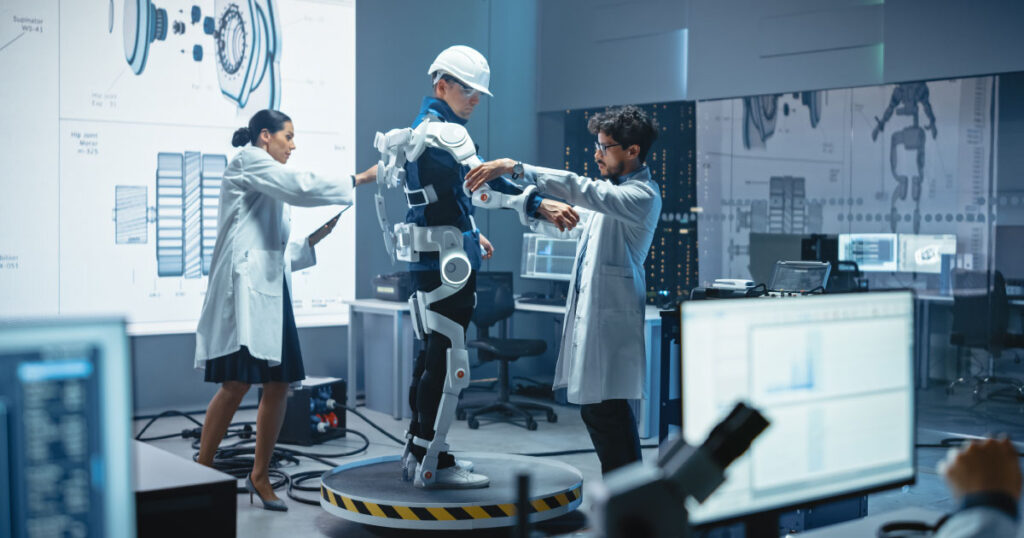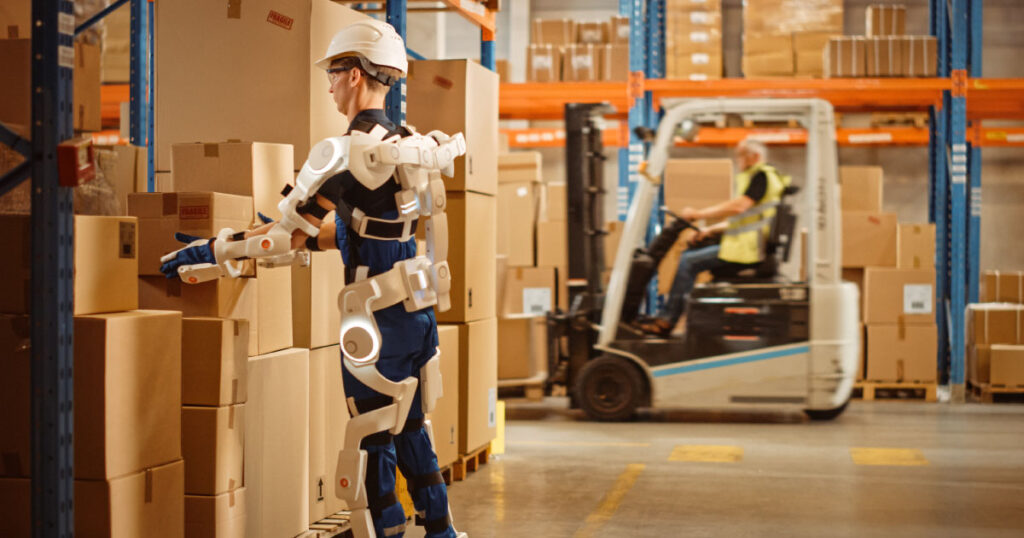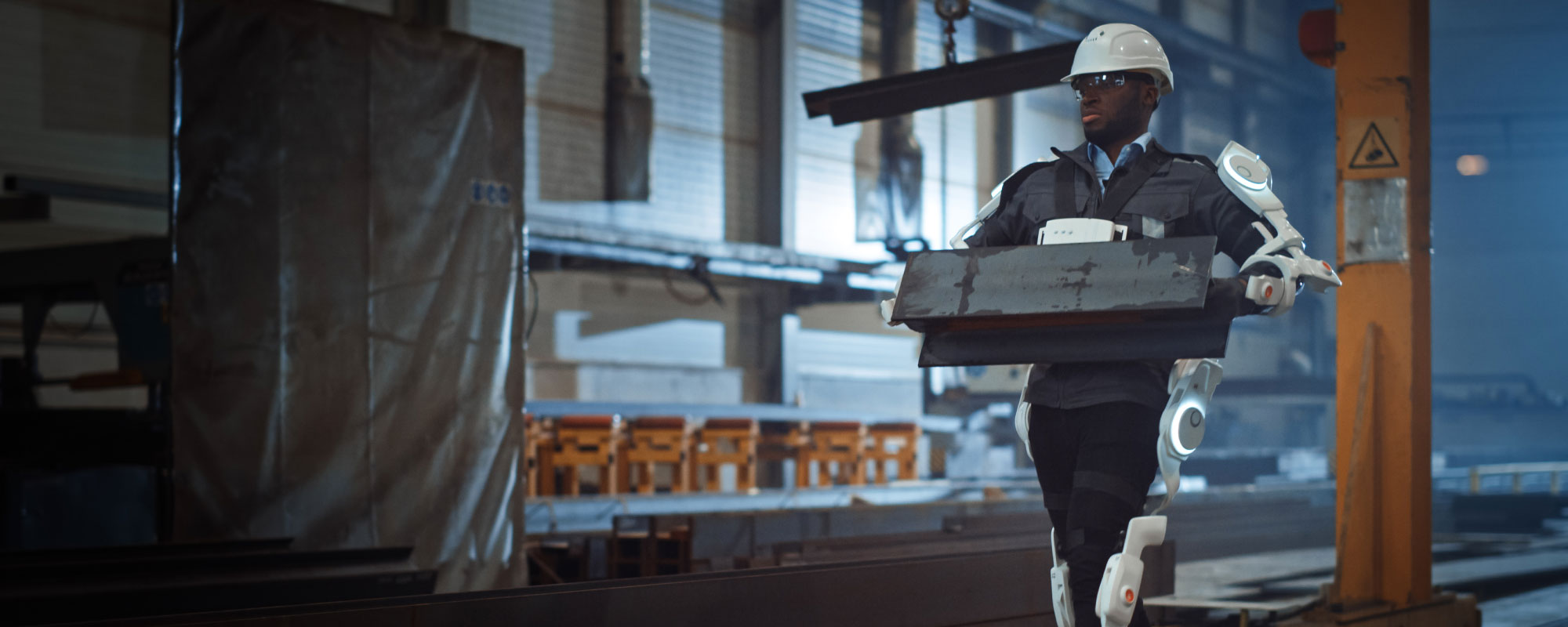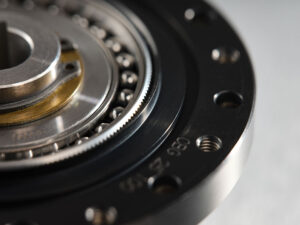Growth
Exoskeletons: Next-Gen Mobility and Efficiency
Today’s exoskeletons combine human intelligence, instinct and judgment with robotic strength and endurance to make tasks safer, easier and more efficient. Jeff Breakey, automation sales director, explains how precision Cone Drive Harmonic Solutions® enable the world’s future industrial workforce through robotics.
Humans and robotics moving in harmony
The global exoskeleton market is expected to grow from $500 million in 2021 to $5 billion in 2030. Two main trends are driving this ten-fold expansion:
- People and employers want greater workplace safety and ergonomics, and
- Labor shortages are challenging people to work more efficiently.
Exoskeletons enable both, especially when they are battery-powered. Suddenly, a worker who can pick up 40 lbs. on their own can manage 200 lbs. effortlessly. The heavy load is lightened for people maintaining aircrafts or assembling automobiles. That’s because gear solutions in the exoskeletons’ joints synchronously carry the burden of the unit’s weight and the task at hand — while augmenting the strength of the wearer’s own body.
Cone Drive, a part of Timken’s Industrial Motion group, designs and manufacturers an array of harmonic gear solutions used in these joints, from component gear sets to actuators, which are complete gear motor assemblies.
Breakey, who has worked with Cone Drive for 26 years, says the company is trusted in the industrial robotics industry based on decades of motion control expertise. Their harmonic solutions are being adopted in high-end exoskeleton applications due their lightweight, compact and torque-dense characteristics.
“Battery-powered exoskeletons have similar challenges as electric cars,” he says. “They must get maximum range, or productivity, out of a single charge. This makes light-weighting extremely important. The fact that exoskeletons are worn by people makes weight reduction even more crucial.”
To reduce mass, Cone Drive engineers start with standard harmonic gear drives and optimize the design to be lighter weight while retaining the same performance ratings. The high-gear ratio inherent in the design leads to greater torque capacity — which is critical to ensuring the exoskeleton joints are as flexible as the humans wearing them.
Cone Drive Harmonic Solutions® Technology in Exoskeletons
Harmonic technology enables the exoskeleton’s precise motion and positioning. This mechanical gear system allows exoskeletons to move more fluidly with the worker’s body – reducing musculoskeletal strain and improving productivity.

Cone Drive Harmonic Solutions gear drives are customized for unique exoskeleton designs and reduce mass up to 45% over other solutions. Center bore holes allow cables and equipment to pass through the gearing.
Adjacent capabilities deliver for customers
The race to bring new exoskeletons to market is coming to a head, with many developers proving their concepts now. In recent prototype field testing, one Cone Drive customer demonstrated the safety and efficiency benefits of using exoskeletons for heavy lifting in commercial aviation and other industrial applications.
Beyond ongoing engineering support for gear solutions — including SPINEA precision cycloidal gear drives for heavier-duty robotics and exoskeletons — customers are taking advantage of Cone Drive’s expanded industrial motion portfolio, including adjacent solutions like magnetic encoders for robotics.
“Encoders use sensing technology to monitor and respond to motion, much like the nervous system does in the human body,” Breakey says. “The sensors detect human intention and anticipate joint loading so the system can provide sufficient power to that joint at just the right time.”
In addition to engineering, Cone Drive’s manufacturing capabilities are crucial for a new market on the cusp of rapid production ramp up. Demand is already increasing for industrial exoskeletons, as well as for medical exoskeletons that help patients improve physical rehabilitation and mobility.
The industry’s high level of customization depending on application, size and performance requirements can impact production cycle times. Cone Drive’s agile manufacturing network and flexible tooling means it can handle many variances and still meet tight deadlines from exoskeleton producers.
“Exoskeletons are new, but we’ve been around for 100 years,” Breakey says. “Engineers know Cone Drive as a strong technical and manufacturing company. They appreciate our relationship with Timken because it cements our stability in the market. They know they can expect value and integrity in every one of our solutions.”

One innovation leads to another. Learn how Cone Drive harmonic solutions for robotics was inspired by the company’s extensive development of worm gear technology for the solar industry.
Last Updated: 2022/12/27
Published: 2022/11/30

